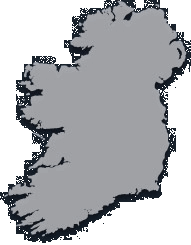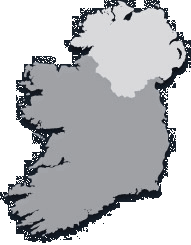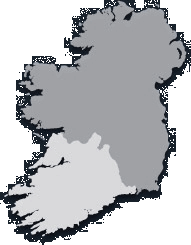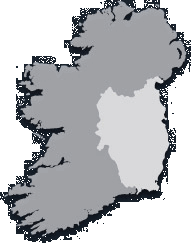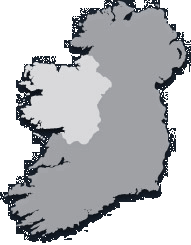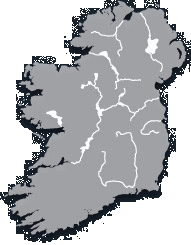Glandore Classic Boat Summer School
July 1994
Bernard Cadoret
Introduction
When Donal Lynch asked me to present the French revival movement I first refused
and tried to find someone speaking better English than mine. But the pleasure of
coming to Ireland was the strongest , so you will have to suffer when listening to my
difficult reading. I apologize for that.
Donal thought it would be interesting to speak of the French revival as it seems to
have taken a certain importance today. But , speaking to Irish friends, I thought it was
necessary to tell you about the situation fifteen years ago.
Our country has known the same disdain from official circles for things maritime as
the one evoked by John de Courcy in Ireland. Therefore it was first through an
intellectual movement - a movement of research and publication - that the
reappropriation of our maritime heritage was made possible.
It seems to me that this example could be of interest for Ireland. So, please, excuse the
somewhat theoretical character of this contribution which, I hope, will be less boring
thanks to the slides shown by Michele.
MARITIME ETHNOLOGY IN FRANCE
A discipline is born
In 1975, my friend Dominique Duviard, then a researcher working in animal ecology
for a French scientific instute, returned from Africa, taking advantage of this holidays
to tour the great Anglo-Saxon maritime museums and their French counterparts.
Filled with consternation by the state of abandon of maritime heritage he observed
along our coastlines - the Mimosa, the last French sailing tunnyman, though still in
excellent condition, had just been destroyed - he could not hide his dismay at the
indifference of official circles, dismay shared by many young people on the coasts at
the time.
“Thus our learned anthropologists, our museum-minded military officers, our
novelists in pursuit of bourgeois sentiments, our film-makers enamoured of the Belle
Epoque, were all indifferent to the disappearance along French Atlantic shores of this
testimony to an out-of -fashion maritime culture?
It might have been expected that our state, so partial to the blossoming of culture,
would do what was necessary to save some evidence of so meaningful an era, as is
common practice in countries very close to our own.
But in France it is more Cartesian, worthier of our glorious Latin civilisation, to
preserve in our museums a hastily-carved Dogon dance mask, only meant to serve in a
single ceremony,or some mangy, feathered fetish object, sprinkled with chicken
blood, used in some ritual. The cultural significance of such works is such that our
occidental countries would be dishonoured if we did not preserve them for evermore.
How many French ethnologists, at loss for a thesis subject, have turned their attention
to the cultural treasure represented by Boshiman pottery or traditional basket-weaving
from the Sao Paoulo suburbs, while a few steps away from their holiday beaches rot
the vestiges of a civilisation scorned, ignored, ephemeral, already forgotten.”
For a scientist attentive to historical and ethnographical facts, the situtation was
effectively surprising. While the rural civilisation itself in France had its longstanding
intellectuals, whose research was documented in a wide range of highly scientific
works and displayed to advantage in numerous museums, the coastline was like a
desert.
Of course ‘Navy History’, as we understand it, like that of our war fleet, was the
subject of many publications; in Paris the Navy Museum has a superb collection of
old model ships on exhibit; but these are exclusively men-of-war. Of course the last ,
great commercial sailing ships, or occasionally those of the Grand Banks fishery have
given rise to much literature, although the daily life of fishermen is hardly mentioned,
generally speaking.
Yet we could have believed that the thousands of plainer men and boats, who did
most of coasting or more limited local trade, piloting, coastal and deep-sea fishing,
not to mention other forms of working the sea environment or more specialized
activities, such as shipbuilding and sailmaking, had never existed. We knew nothing
of the various boat types, of their manoeuvres or life on board, fishing techniques or
shipwright’s skills, habitat and clothing, nor their eating habits; nothing of their
vocabulary, social relationships, mentalities....
However, as early as the end of the 18th century and during the whole first half of the
19th, renowned artists, such as Pierre Ozanne, Ferdinand Perrot, Charles Mozin or
Morel-Fatio had attracted attention to the small inshore working craft and their crews.
And even, by 1867, Admiral Paris had already pioneered the field with his ‘Souvenirs
de Marine’, which included a number of designs, though lacking in commentary, of
traditional boats from our coastlines. No one in Europe had yet become truly aware of
the necessity of collecting specific technical data on’vernacular shipbuilding’.
Paradoxically the admiral was emulated in northern Europe and in America; it took
over a century for his approach to be followed and emulated by young French
scholars.
In the meantime, only oral literature and folklore received some attention thanks to the
gathering done by Paul Sebillot in Upper Brittany (around 1880) and to books written
by commander Hayet on seamen’s traditions specific to deep sea sailing ships (around
1930). But upon examination of the specialized bibliography, no genuine, highly
scientific work on maritime ethnology, like those of which so many existed in Northwest
Europe, comes to the fore.
For instance, there is nothing resembling the remarkable investigations Wassildo
made on sailors’ villages of the southern Baltic Sea (1949-1951) or the very
comprehensive works of James Hornell on the British coracles and Irish Currachs, in
the twenties, or of Basil Greenhill on the world of Devon’s coasting schooners (1951),
the systematic research carried out by Henning Henningsen on all Danish seafaring
traditions (1930-1992) or the Scandanavian maritime ethnology classic studies on the
life of deep sea sailors in the sailing era (1969) by Knut Weibust, Olof Hasslof etc.....
How can this absolute lack of interest by French researchers on such a vast and
fascinating subject be explained? How can we understand the eclipsing of of an entire
segment of national heritage in a country with three thousand kilometers of coastline,
whose maritime history is so prestigious, as we are told? In order to answer this
question in detail we would have to recreate our country’s cultural history; however
three types of fact can be distinguished for a clear understanding of the situation.
First of all we must remember that shipbuilding and inshore fishing fall within
popular
culture, therefore almost entirely within the realm of oral communication; contrary to
the “great” military or merchant navies, these “traditional” activities leave few written
traces or plans. Only field investigations, sometimes requiring knowledge of regional
dialects, make this study possible.
Nonetheless , a practically identical situation did not prevent collectors and historians
from studying the rural world. The truth is that the seaman’s world has always been
considered to be marginalized and it would not be exaggerating to say that, in France,
the usual indifference of literate classes towards popular cultures is often tinged with
distrust or even scorn.
A second comment in France; coastal areas with intensive martitime activities are
peripheral by definition; often quite remote from the capital city where most of the
nation’s intellectual activities are gathered. In this respect we can see very different
situations in countries like Great Britain, Holland, Denmark, Norway, Sweden,
Portugal and of course, the United States, whose capital cities are often large port
towns whose university elite are more familiar with concerns of a maritime nature.
But, above all, it must be noted that the maritime world’s culture is largely of a
technical nature. More than that of any other social group it is based on a set of rare
knowledge, complex know-how and absolutely specific vocabulary. Penetrating the
seaman’s environmment presupposes, at the very least, previous training which the
national education system is not geared to give, requiring years of personal learning
experiences.
This, no doubt, explains the very small number and too often the relative lack of
success of university studies undertaken on these subjects, at least in our country.
In the highly significant field of inshore traditional craft, a striking comparison can be
drawn between the research situation on France and that in other countries following
the second world War (when these craft drew near to disappearing)
In the Anglo-Saxon world, already serious, specialized literature, devoting
considerable space to the study of boats, appeared as early as the 1840’s. The
Washington Report, published in Great Britain following a devastating storm in
Scotland, was certainly the first well-thought-out study (illustrated with many plans)
ever devoted to local fishing boats and their users (1849) and we have seen that two
plans of Irish hookers were published on that occasion. But large-scale development
of research on maritime subjects began in Northern Europe and the United States at
the turn of the century, peaking, so to speak, around 1930.
During this period the Nautical Research Society of London, well aware of the urgent
need to act , sent a naval architect named P.J.Oke to study the last traditional boat
types of the British Isles. His work was resumed by many scholars, in particular by
Edgar J. March.
In Denmark Christian Nielsen, mandated by the Danish maritime museum in
Kronborg, undertook analogous studies; in Norway, Bernhard Faeroyvik did the same
at the university, as did Hans Szymanski and Wolfgang Rudolph in Germany. In the
Netherlands, Sweden and even , on a minor scale, Portugal, considerable progress was
achieved.
In the United States, a great forerunner in the figure of Howard Chapelle, historian
and ship designer, launched an ambitious research programme; the publishing of his
works , spread over twenty years,triggered a repercussion of gathering, restoring and
conserving heritage objects, which led to the founding of many museums, notably that
protype of great modern maritime museums which is Mystic Seaport.
On the whole, these countries had all undertaken an enormous attempt to study and
enhance their maritime culture and heritage, yet on the contrary, France was
conspicuous at the time by her odd and culpable indifference towards the subject. Not
only had there been no outstanding document published since Admiral Paris’
precursory works, but the number of symbolic abdications increased in the realm of
preserving an inheritance which represented, all the same, one of the most captivating
aspects of the nation’s cultural heritage. Thus ,in 1973, as an appaled, yet lucid young
editorial writer I was able to write;
“France is the country where the Implacable (ex seventy four gun ship Duguay-
Trouin) voluntarily has been scuppered in the Channel; where a Viking boat burial on
Ile de Groix has been dispersed within a week; where Roman ship ruins have been
destroyed by spades used to extricate two amphoras; where hundreds of tuna dandies
have slowly rotted on the shore, then suddenly vanished; where the last of the squareriggers
have been sold off to foreign buyers; where town councils have voted to burn
the last, lovely skeletons of the lobster boats; where docks from the 18th. century have
been filled in to make car parks and ‘boat parks’ costing millions of francs, opened a
few hundred metres away; it is the country of dismal museums, of pillaged ex-votos,
of collections scattered and sold for a song to America, of sea-shanties dragged
through the mud of the worst cafe-concert folklore. It is the country whose nautical
past has been speedily liquidated, the country of the negation of part of itself, its roots
and its history”
Was it because we could sink no lower? At any rate the first signs of revival of
interest for maritime life were displayed in the late sixties; coming at the time from
isolated individuals.
The Nineteen Eighties; Deepening Knowledge and Diversity
In the field of maritime ethnology, the decisive event in the nineteen eighties was the
highly spectacular change in scale affecting the current of interest, turning it into a
genuine intellectual movement.
In 1981, the creation of the Chasse - Maree magazine, by a team which was very
involved from the outset in the research procedure, and its very quick success (40,000
copies per issue sold, 17,000 subscriptions in 1991) gave considerable scope for
revival of interest among the French for maritime culture. This success was effectively
accompanied by a spawning of of a powerful association movement which increased
teams, territories and research subjects in unexpected proportions. Magazines,
newsletters, associations , federations and local museums are all new relays concerned
with both scientific quality and true communication.
Emulation and solidarity have borne fruits; on every French coast amateur researchers,
whether alone or in groups, have undertaken studies in their region whose level is at
least equivalent to that of their predecessors’ work.
The existence of a widely-circulated periodical magazine, richly illustrated, yet
exacting, which welcomes true in-depth articles, has progressively facilitated the
highly stimulating publication of works from a new generation of authors, established
all along the coast, from French Flanders to the Mediterranean. Following their
example dozens of little coastal communities, involving thousands of people, have
researched their history and traditions in depth.
Along with this geographical deployment is a corresponding dawning of specialities
and research areas. Scholars are studying as well a local boat type or life in a small
harbour, as a specific subject in a large geographical region, and the concerned periods
range from eighteenth century to the most contemporary times. Highly original
subjects have been taken for in-depth studies; such as architecture and the coastal
habitat, traditional docks and yards, tidal mills and boat mills, popular art and
maritime paintings, oral literature, music and songs, jousts, nicknames, religious
behaviour,social and political conduct, on-board crafts and occupational art, cooking,
traditional hunts and their relationship to sea animals, womens’ traditional activities,
canning factories, inland water transport, lifesaving etc.....
Finally the various contemporary trades are given sustained attention and articles
ranging from simple reports to historical and sociological analysis thus facilitate the
setting of the study of old maritime activities in perspective with thoughts for the
future.
All of these steps, now coordinated for the first time, give us the glimpse of the
possibility of a genuine maritime ethnology, meaning an endeavour for an overall
understanding of maritime societies and their historical evolution, at least on our
country’s scale. It now remains to set up teaching and research structures in
universities near the coasts which may extend and deepen the enormous volunteer
work already achieved. It also remains to create an active network of maritime
ethnology museums along the coastline, liasing with the movement of associations for
heritage, in order to communicate these research results in a lively way to an even
wider audience and to our children above all.
The Restoration Movement
At the very moment when this vast intellectual work tried to fine its place , some
yachtsmen and shiplovers began to restore small traditional boats so as to sail on
board them. Some of them, like the Old Gaffers, in St. Malo fit them out on the model
of the small cabin yachts. Many an interesting craft, like the sinagos or scallop
dredgers from Brest were converted unskillfully to yachts and sailed abroad to the
Mediterranean and even further, Others , like the Catalonians of Callioure, in southern
France, tried to rig their boats in a more traditional style. But, taken all round, these
restorations, carried out by isolated amateurs without any real knowledge of the
working sail tradition, remained approximate.
1981- the year of the foundation of Chasse-Maree - was an important year, with the
launching of a new sinago lugger in the Gulf of Morbihan (south Brittany). In France,
it was the first replica of a traditional boat built with a real concern for authenticity.
Thanks to this example the last surviving sinago of the Gulf of Morbihan was restored
and obtained - it was the first time - the status of a ‘historical monument’, which ,until
then, in France, was exclusively reserved for chapels and castles.
For its part , in 1985, the association Treizour from Douarnenez - which since 1982
had collected, at its own expense, nearly 200 traditional boats which were about to
disappear all along the French coast- opened the Musee du Bateau (boat museum)
which some years later was to become the Museum Harbour of Douarnenez, well
known today. Very soon shipwright training courses were organised which allowed
the launching of several small boats and the teaching of a new generation of young
shipwrights .
A new stage was reached in 1983 with the building of a 30 ft. Douarnenez sardine
lugger - to a pattern of 1900, very interesting because of her original rig and her
nautical qualities, and whose last examples had disappeared for over half a century .
It’s thanks to the researches of Ar Vag that this type of forgotten boat could be
reconstituted with complete authenticity of every detail. This technical adventure ,
from the drawing of the plan to the real sailing, has been a superb lesson of
experimental archaeology, which allowed even more ambitious projects to be
launched later.
To share their enthousiasm, these fanatics were then going to make every effort to
organise traditional and classic boat gatherings. After the festivals, in the roads of
Brest, in 1982 & 1984, which maintained a local character , a great event was
organised in Douarnenez, in 1986, which, for the first time, was of national and even
international impact. the success and spirit of these festivals gave a strong impulse to
the revival, backed up by many good technical articles and books shedding new light
on various forgotten French boat types.
From that time on the number of restorations of traditional boats grew rapidly on our
coasts. In certain areas, as in Normandy with the small luggers called vaquelottes, in
the roads of Brest with the scallopdredger sloops, in south Finistere with the small
luggers called misainiers, in Morbihan with the sinagos - another type of two-masted
lugger - in the bay of Arcachon ( not far from Bordeaux) with the so called pinasses,
in Roussilion with the Catalonian barques, heterogeneous flotillas arose, inspired,
though late , by the example of the Irish hookers or the Dutch botters.
Besides , the reconstitutions of new boats, often leaning on local associations
organising festivals and encouraged by the magazine Le Chasse-Maree, spread along
the coast.
In 1987, in Cancale, the launching of a bisquine, a big fishing three- masted lugger of
nearly 65ft., with an extremely spectacular rig, represented another new stage.The
success of the enterprise, whose budget of over 2 million francs seemed
enormous,was based on the mobilisation of the local inhabitants whose contributions
came in complement of public funds, every frame or sail of the boat being paid for by
one or several amateurs.
The festival of Douarnenez 88 was in a certain way the pinnacle of this still scattered
and marginal, although promising, movement.
That was the time for the Chasse-Maree to propose a great challenge, up to the new
ambitions of this movement; in other words, to rebuild, in every harbour in the
country, a sailing boat or ship representative of the local tradition, whether new
building or restoration. This national competition was called “Concours bateaux des
cotes de France”. Its aim and slogn was to build “ a hundred boats for the French
coasts”.
Thanks to the success of the previous festivals, mighty media sponsors and public
partners supported this competition. Appointment was fixed for the festival of Brest in
July,1992 where the competitors, who would mingle with the classic and traditional
boats from all over Europe, would receive their awards.
the importance of such an enterprise was rapidly understood by the representatives
and local authorities, especially by some municipalities in Brittany, who supported
financially part of the most audacious projects; the coasting lugger of 55 feet, built in
Quimper, the naval schooner of 82 feet built in Brest - both ships from the beginning
of the 19th. century - were the most ambitious . But the numerous projects - there
were over 120 of them, of which more than 80 were effectively built - are extremely
varied and are ranging from a small craft of 12 ft., built by a coastal village, to a
barquentine of 100 ft., from a river Loire barge to classic racing yacht, from a small
lateen-rigged boat of the Mediterranean to big cutters of the Channel, each harbour
competing with each other for the most attractive project.
If the backing of the state was not completely absent, the local pride turned out to be
an excellent spur for municipalities and local sponsors, but also for local scholars,
managers, teachers, seamen etc. And that is how a huge movement of research was
put into place all along the French shore: a real living university of the coast, which
would allow the saving of an extaordinary treasure of memory and of knowledge. At
a time when researches concerning traditional boats were led by only a few scholars,
hundreds of persons are now converging and contributing to save documents and
testimonies, even in the smallest harbours.
Most of the projects of reconstitution of a local boat type will be, we hope, at the
origin of a different way of development for the small communities of the shore, as
they arouse a qualitative tourism based on their maritime heritage amd on their own
identity, and also on the respect of their environment, while giving an image of
dynamism and creativity which gathers the whole community.
To reinforce still more this movement of research around the local heritage, the
magazine, Le Chasse-Maree has just launched a new competition devoted this time to
the collection of oral testimonies, documents and environment, whose results will be
presented at the occasion of a big exhibition organized during the festival of Brest 96.
To rebuild beautiful traditional boats if they have to sail in a banalized environment of
concrete marinas, without any link to the maritime past, would make no sense at all.
I would like, as a conclusion, to tell you of the deep feeling we have towards the
culture, the traditions and especially the maritime heritage of your country. Since
some years we have been travelling around Ireland, visiting coves and creeks, meeting
people, admiring boats and craft, buying and reading many old and recent books. By
the way , thanks to Kenny’s bookshop, in Galway, which is sending us books directly
to Brittany.
From this growing passion emerged a strong conviction: We have to take part, in our
modest way, but with all our energy, in the movement of the revival of the Irish
maritime culture.
As I have tried to demonstrate in this contribution, the movement of the restoration of
traditional boats in France began with the popular succes of a magazine, and even
more, as seen before, with the publication of two books : Ar Vag, Working Sail in
Atlantic Brittany and Boats of Normandy. These two books had in common a very
rich illustration, the precision of the text and of the pictures’ legends - each boat
shown being identified to one or more people or families - the importance given to the
human aspect as to the use and manoeuvering of the boats. Through these books
thousands of people on the shore have become proud again of their heritage. To
rediscover their own boats has given them a strong sense of their identity, together
with a deep need to rebuild them, when they had disappeared.
An identical process would produce at least as interesting results here, where the Irish
spirit would, no doubt, add a deep originality.
So, one of the reasons for my coming to Glandore, beyond the great pleasure of
attending the summer university and the regattas, is to make an appeal: We would
like, for the coming years, to launch a research project which would be finalized by
the publication, first of articles in magazines, and then of an important book which
would deal in a decisive way with the maritime traditions and especially the
traditional working boats of Ireland.
Concerning the researches it wold be useful to constitute a multi-regional team for the
oral enquiry and archives work, all along the Irish shore. The collecting of
iconographical material, of plans, models, engravings, paintings and old photographs
should be made in a systematical way. A photographic mission for contemporary
subjects should also be set up.
Concerning the publishing the Chasse-Maree, with the help of all the interested Irish
partners (and among them people like John de Courcy Ireland, Dick Scott, Hal Sisk,
Michael McCaughan, Paddy Barry and many others) intends to publish a richly
illlustrated (black and white and colour) book, of over three hundred pages, taking
stock of the researches on Irish maritime tradition.
Two editions could be realized: one in English language (with some elements in
Irish), which could be distributed in all English-speaking countries. Another one in
French. This work would be part of a colllection about maritime traditions of the
Celtic countries.
I propose the following very simplified plan for the book, which could be developed
to serve as a working schedule, each chapter being taken in charge by one specialist or
team.
Part One : The skinboat tradition : Ancient skinboats of Ireland; the Boyne coracle;
the various currach types of North-West Ireland (from Sheephaven to Dingle); curragh
inspired wooden craft.
Part Two : The Nordic clinker tradition : Double-ended clinker-built boats; Ulster
yawls, Ulster and Donegal ‘Drontheims’; Dublin Bay wherries, Cork yawls etc;
square-sterned , clinker-built craft; inshore and inland water.
Part Three : The western carvel tradition : Achill Island yawl, Connemara pucans,
gleoiteogs and hookers; square-sterned carvel- built craft of the south west as the Hare
Island lobster yawl; the Kinsale hookers; Scottish, Manx and Cornish influenced
boats, Zulus, Nickies, Nobbys and luggers.
Part Four ; The flat boat tradition ; The dug-outs; the reed boats; various inland
and coastal cots; the Wexford cots.
Part Five (eventually) The coasters ; smacks, Schooners, brigantines, brigs.
Part six (eventually) : Yachting : From the seventeenth century Kinsale and Cork
yachts to the last gaff-rigged Irish boats (but this could be another book or a second
volume)


